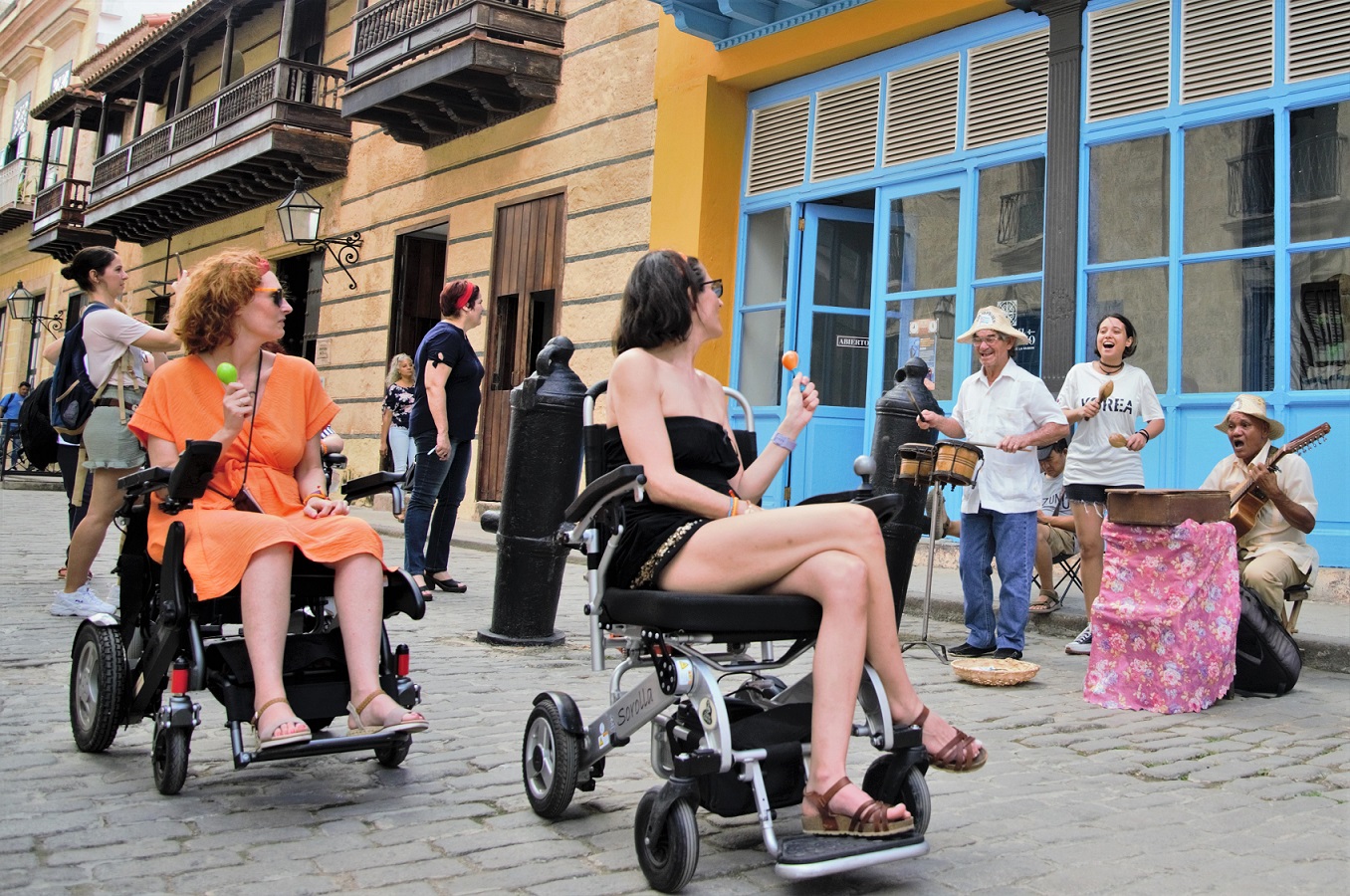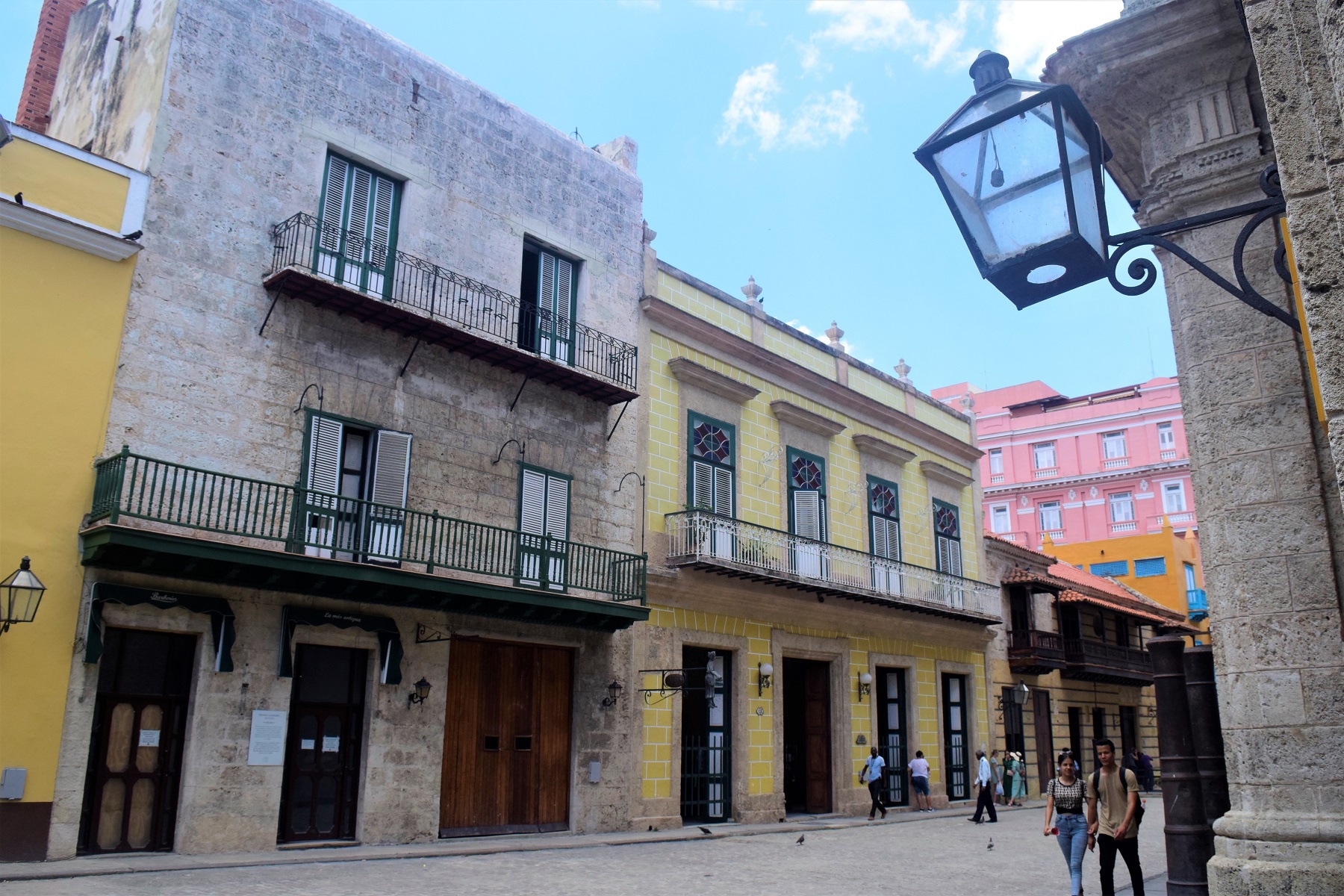Over the course of his almost six decades of uninterrupted service to the town of San Cristóbal de La Habana, city historian in perpetuity Eusebio Leal left an immense legacy embedded on the stone and conscience of the Cuban capital.
Born September 11, 1942, these days stand proper for a tribute to the work he carried out until his last breath July 31, 2020. Leal dedicated his efforts to restoring Havana´s weary face, healing the cracks on both its spirit and building fronts. His passing through the Historic Centre inspired the making of Leal road, a project by which San Cristóbal travel agency features several tour routes gathered in one programme.

This tour honours the memory of Eusebio Leal (1942-2020), who holds the title of Havana City´s Historian in perpetuity. Photo by Alexis Rodríguez.
Four loyal winds
In the nineteen eighties the Office of the City Historian of Havana significantly began to increase its projects focused on social and architectural rehabilitation, with a n in-depth and extensive agenda set on revitalising the city´s heritage while also adapting the new environment and the local life in a way which integrated the social dynamics of Old Havana with the new touristic scope of many heritage management ventures.
International and domestic cooperation projects resulted in archaeological and conservation works that eventually ended up comprising a one kilometer area that involved the four historic squares of Old Havana and the corresponding sector of Avenida del Puerto.
This area is today known as the Golden Kilometer and harbours an entire system of public areas, shops and businesses, museums, office spaces, hotels, cultural hotspots, schools, popular and fine dining establishments as well as social housing which are al interconnected to encourage local development and the consolidation of a living urban organism able to preserve, reproduce and resignify heritage.
Come the turn-of-the-century, the tech-industry boom and advances in computer sciences and communication technologies didn´t turn out in a loss of authenticity and roots, far from it; the endeavour had new means through which it could perfect the methods of sharing and spreading awareness regarding the city´s heritage values. This meant greater efficiency in data collection and management of cultural assets.
With this the conceptual cornerstone of the product Leal road was set. The tour comprises the four historic squares of Old Havana –Plaza de Armas; Plaza de la Catedral; Plaza de San Francisco de Asís; Plaza Vieja–, but also includes other relevant sites where the saving efforts of the Office of the City Historian proved to be fruitful, such as the National Capitol and its surroundings in Paseo del Prado, also known as Paseo de Martí.

Leal road features an inclusive and dynamic approach to Havana´s Historic Centre. Photo by Agencia San Cristóbal.
Leal road´s relevant features are:
· Its inclusive design: the urban layout and accesibility services across Havana´s Historic Centre are taken full advantage of in order to share all of the city´s charms with everyone. Ramps, electrically powered whellchairs, braille plaques, audioguides and assistants are available for all travelers during the journey.
· An app: using a mobile application, the traveler can enjoy their autonomy during the walks. They can choose up to four routes to get to know the Historic Centre at their own pace, combining the information provided by their smartphone screen via an easy-to-navigate interface with the sensorial experience of the adventure.
· La aplicación está disponible en inglés y español, pudiendo el viajero solicitar un intérprete guía de la lengua de su conveniencia.
· The design and true-to-facts nature of the tours: the efforts of certified heritage and cultural tourism specialists intervened in the making of the routes the travelers can enjoy. Professionals from the Office of the City Historian who are well-versed in the nation´s history and popular expressions guarantee an experience equally based on trust, fun and legitimacy.
· Approach Havana through Leal´s eyes: the travelers can get to know the Cuban capital the way Leal did as a persevering and passionate defender and promoter of the city´s heritage.

Authentic heritage sites and expressions stand out in every street. Photo by Agencia San Cristóbal.
Relevant streets and sites:
· Empedrado street harbours the Cathedral of Havana in the eponymous Plaza de la Catedral. The religious building exhibits a beautiful architectural outline and is highly regarded among worhsippers and non worshippers alike due to its presence throughout the city´s history. Also in this very old passage is the Bodeguita del Medio, a landmark where the traveler can enjoy refreshing drinks and a cozy atmosphere.
· Oficios or Crafts street is one of the oldest in Havana. It links three important inner walls spaces: Plaza de San Francisco, Plaza de Armas and Alameda de Paula (boulevard). In Oficios street one can encounter unique stores and markets, workshops, residential neighbourhoods, museums and galleries, among them some of particular significance such as the Alexander von Humboldt library with its rare editions collection, the Automobile museum, the Palace of Governance, La Mina restaurant (former San Francisco de Sales college), the vintage timepieces refurbishing installation and more.
· If the traveler begins their journey on Plaza de Armas, they can start the adventure from iconic sites like El Templete, the Palace of the Second Corporal or the Palace of The Captain Generals, establishments of special meaning for historian Leal since he destined a great deal of effort and resources in their restoration and salvaging from cultural oblivion, keen on having them as cornerstones and paradigms of the rehabilitation works programme in the old city of Havana.
· Ambos Mundos or Two Worlds hotel is especially known for having had Hemingway as a guest back in the 1930s. It connects through Obispo with El Floridita, another place frequented by the famour writer given his predilection for the captivating falvour of the flagship Cuban drinks mojito and daiquiri.
· In Obispo the traveler can also access several places of interest such as the Coin Museum, or the restored works of the Golden Kilometer that today are the grounds for important institutions like the University College of San Gerónimo.
All along the street there is a parade of restaurants and pubs that vary in specialty, and one can enjoy the surroundings there either from ground view –it´s very common to find tables set up right outside– or from a rooftop sight of the city. In any case, the venues are always thrumming with live music and the allure of true Cuban flavour and hospitality. Another appeal on Obispo is city life, especially as the passage nears Parque Central– the high rate of pedestrian activity is perhaps what makes this street stand out as a colourful and unique thoroughfare.
Leal would make it a point to see it that way not just for Obispo, but for each and every other street in his Havana, since the value of that kind of heritage, the one stemming from Havana´s inhabitants, is priceless.
Leal road is but a small tribute, a discrete way of tapping into the legacy of the eternal historian of Havana. Dr. Eusebio Leal Spengler´s activity was as wide as it was deep. Taking that into account, here at San Cristóbal our specialists designed a programme not to overwhelm the travelers with facts that take a lifetime to learn, but to open up the windows into a city that is no longer felt with the hands nor seen with the eyes, but with the heart, for once that is possible, the traveler will have taken the first step along that path of beauty that memorable people leave along the cobblestones in a trace of inspiring accomplishments and industry.

